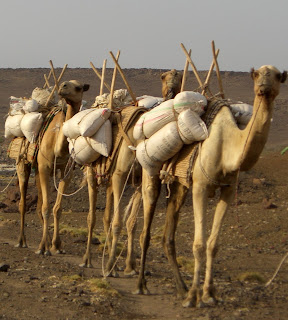I’ve had my hair highlighted blonde since I was 17. In many ways I would love to go natural, as I dislike looking artificial in other ways; I never wear make-up, rarely wear jewellery, and prefer simple clothes. So over the last few years my hairdresser in the UK had listened to the repeated phrase “not too blonde, please”, and gradually – so gradually that you didn’t notice it – my hair was getting darker. I’m not sure that I would ever have ditched the highlights completely, as I was accustomed to being a blonde, and it’s true, blondes are treated differently. But as someone who tans easily, and had reached middle age, I had an intense fear of ending up looking like Donatella Versace. My hairdresser had responded brilliantly – dear Tony, who has done my hair for more than twenty years.
But Tony was no ordinary colourist - he had risen over those twenty years to be head of colour for Vidal Sassoon UK.
So I knew I was in for some disappointment over here. In fact, I nearly chickened out of getting it done at all this time around – although it was three months since it was last done, my hair looked ok, a combination I suppose of the gradually darkening highlights and the effect of the sun on the roots. I could have waited until my conference in the UK in July and gone back to Tony. But I knew there would come a time when I would need to have it done here, and I had spotted a clean, modern place, with a French woman doing hair colour, so decided to bite the bullet.
Oh dear.
I have managed not to cry so far since it was done. I tell myself that the Senegalese don’t understand ‘natural’ anyway. Their women straighten, lengthen, colour, tease, braid and goodness-knows-what-else their hair. They glue on artificial nails, wear exotically coloured robes, layer on the gold jewellery, and totter around on glittery, jewel-encrusted high-heeled shoes. So they will probably think my pale apricot-coloured hair looks great.
I suppose this isn’t a tale of ‘louiseinsenegal’ as it could easily have happened in a suburb of London. But when she asked if I wanted the roots done the same colour, it was easier to just say ‘oui’ than to try to find the French words to explain that I wanted them the same colour as the hair next to them, ie with little silvery-blonde streaks. But even without the language differences she must have known that I didn’t want horizontal blonde stripes above my ears? When she spotted me examining them with a concerned look, she immediately offered to cover them up – but I made the assumption that the stuff she was applying was a darker colour, whereas in fact it was more bleach, so now I have two completely bleached-out areas at my temples, which in a bad light look like bald patches. & goodness knows what it will look like once the roots start to grow through.
To be fair, she knocked $20 off the price as she knew I wasn’t happy, and she told me it will be better next time as now she understands what I want. But I think much of tomorrow will be spent seeking out hats or scarves (or perhaps a wig??), and poor Tony is going to have a hell of a repair job on his hands when I go back to the UK for a conference in July…
To cheer myself up, here's a photo (from Kenya) of another African bird with funny hair.









